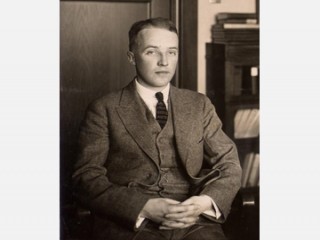
Charles Herbert Best biography
Date of birth : 1899-02-27
Date of death : 1978-03-31
Birthplace : West Pembroke, Maine
Nationality : Canadian
Category : Science and Technology
Last modified : 2011-02-07
Credited as : Medical scientist, co-discovered insulin , and enzyme histaminase
The Canadian medical scientist Charles Herbert Best co-discovered insulin in 1921. He also discovered the enzyme histaminase, and his studies on choline established its importance as a dietary factor.
Charles H. Best was born on February 27, 1899, at West Pembroke, Maine. His parents, Dr. Herbert Huestes Best and Luella Fisher Best, were Canadian. Charles entered the University of Toronto in 1916, but interrupted his studies to join the Canadian army. After World War I he resumed his studies at the University of Toronto and graduated in May 1921.
The day after his examinations Best began work with Frederick Banting in the department of physiology. Best had been asked to assist in the chemical procedures involved in the research. He and Banting started their work on the extraction of pancreatic tissue and the treatment of depancreatized dogs. This project led to the discovery of insulin later that summer.
Best was appointed director of the Insulin Division of the Connaught Laboratories in January 1922. In 1924 he married Margaret Hooper Mahon, and in the following year, after he had received his medical degree from the University of Toronto, the couple went to England. There Best worked with Sir Henry Dale and obtained his doctorate from the University of London in 1928.
During his postgraduate work and throughout his medical training, Best continued to be actively involved in insulin production and studies on diabetes. He had numerous appointments at the University of Toronto; after Banting's death in 1941, Best became head of the Banting and Best Department of Medical Research.
Following the work on insulin Best continued his investigations in several different areas. In London he became interested in histamine. On his return to Toronto he and E.W. McHenry demonstrated the action of histaminase, an enzyme responsible for the breakdown of histamine. In 1928 Best organized a team to explore the sources of heparin and to test its effectiveness in the prevention of thrombosis.
Researchers had noted that after removal of the pancreas, and despite the use of insulin, the livers of dogs became swollen with fat. Best, with his colleagues J. M. Hershey, M. Elinor Huntsman, and others, investigated the cause of these fatty livers and found choline to be one factor preventing the development of fatty livers (a lipotropic factor). This was an important discovery since, when fatty livers do develop as a result of a deficiency of choline or related factors, fibrotic changes and, finally, cirrhosis may follow.
Best received honorary doctorates from 18 universities, and was the recipient of numerous medals, awards, and honors. He was a fellow of the Royal Society of London, the Royal Society of Canada, and the Royal College of Physicians and Surgeons of Canada.
Best retired from the University of Toronto in 1965 and spent much of his time traveling around the world with his wife. He died on March 31, 1978, in Toronto.
















